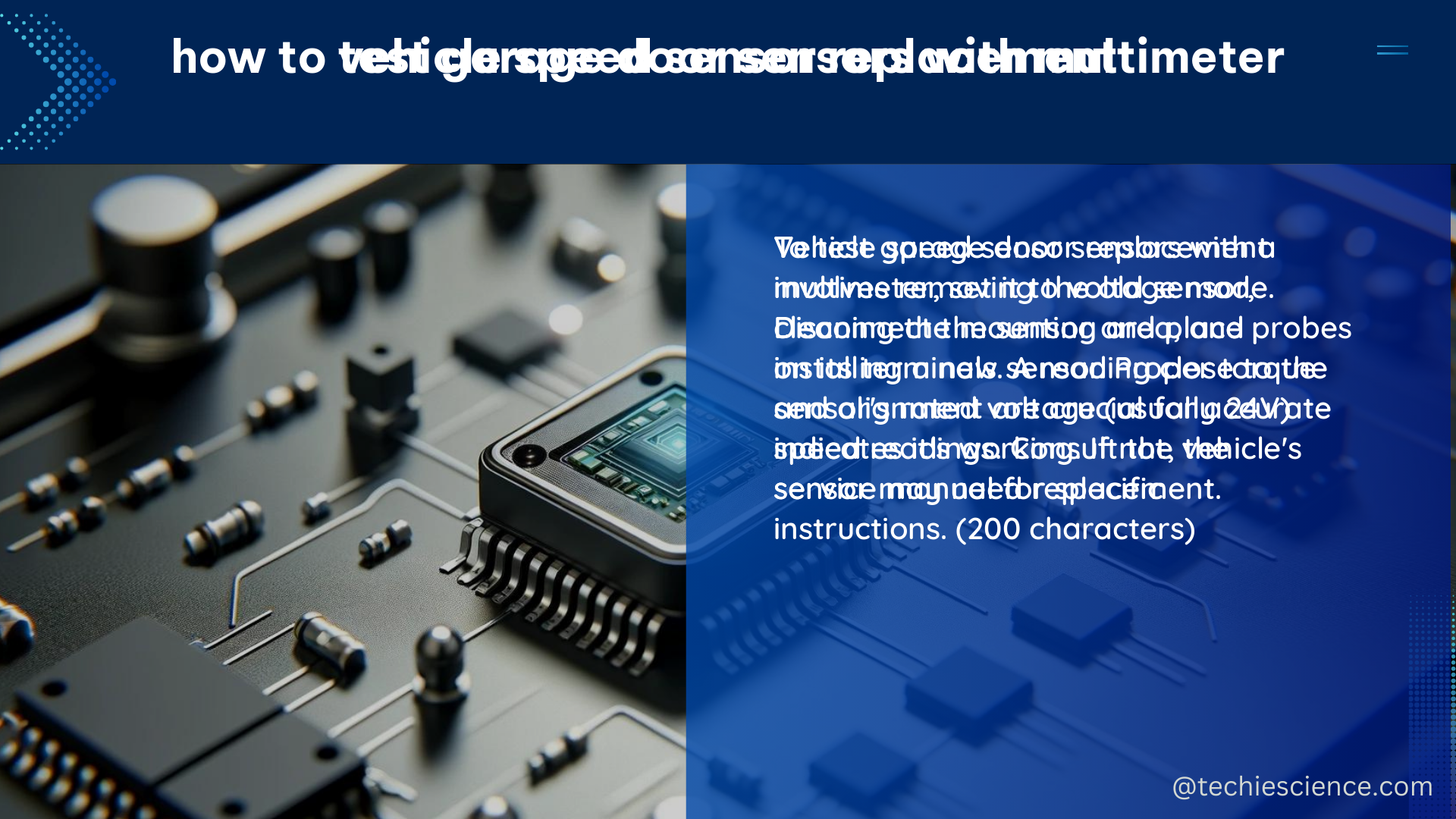Vehicle speed sensors, also known as wheel speed sensors, are crucial components in modern vehicles, providing essential information for various driving assistance systems, including ABS, TCS, ESP, and ACC. These sensors detect the wheel speed and transmit this data to other vehicle systems, such as the engine, transmission, navigation, and chassis control systems, via data lines.
Understanding the Operating Principle of Vehicle Speed Sensors
Vehicle speed sensors are typically positioned above the impulse wheel, which is connected to the wheel hub or drive shaft. The sensor contains a pole pin surrounded by a winding, which connects to a permanent magnet. As the impulse wheel rotates, the changing magnetic field induces a quantifiable, measurable alternating voltage in the winding, which is proportional to the wheel speed.
The sensor’s operating principle is based on the Hall effect, where the voltage generated is directly proportional to the strength of the magnetic field and the speed of the rotating impulse wheel. This voltage signal is then processed by the vehicle’s electronic control unit (ECU) to determine the wheel speed, which is essential for various driving assistance systems.
Diagnosing a Faulty Vehicle Speed Sensor

When diagnosing a faulty speed sensor, it is crucial to observe specific repair notes. For instance, repair work to brake systems should only be carried out by qualified specialists, and when carrying out any repairs on the brake system, one must follow the maintenance and safety instructions of the vehicle manufacturer and the product-specific assembly instructions.
To ensure accurate measurements, the use of an adapter from an old identical sensor can be helpful in taking reliable measurements directly at the plug contacts. This can help identify any issues with the sensor’s wiring, connections, or internal components.
Replacing a Vehicle Speed Sensor
The process of replacing a vehicle speed sensor can vary depending on the make and model of the vehicle. However, there are some general steps that can be followed:
-
Locate the Sensor: The first step is to locate the vehicle speed sensor, which is typically positioned near the wheel hub or drive shaft.
-
Disconnect the Sensor: Disconnect the sensor’s electrical connector and remove any mounting hardware, such as bolts or screws, to detach the sensor from the vehicle.
-
Install the New Sensor: Carefully install the new sensor, ensuring that it is properly aligned and secured in place. Follow the manufacturer’s instructions for the correct torque specifications.
-
Reconnect the Electrical Connector: Reconnect the sensor’s electrical connector, ensuring a secure and reliable connection.
-
Perform a Functional Test: After the replacement, it is essential to perform a functional test to ensure the new sensor is working correctly. This may involve checking the sensor’s output voltage or using a diagnostic tool to verify the sensor’s operation.
Cost Considerations for Vehicle Speed Sensor Replacement
The cost of replacing a vehicle speed sensor can vary depending on the make and model of the vehicle. For instance, a replacement speed sensor for a BMW E46 can range from $50 to $200, while the labor cost for installation can range from $80 to $150, depending on the repair shop’s hourly rate.
It is important to note that the cost of the sensor itself may be influenced by factors such as the sensor’s complexity, the materials used in its construction, and the manufacturer’s pricing strategy. Additionally, the labor cost can be affected by the accessibility of the sensor, the complexity of the installation process, and the hourly rate of the repair shop.
Conclusion
In summary, when replacing a vehicle speed sensor, it is crucial to understand the sensor’s operating principle, observe specific repair notes, and be aware of the cost implications. By following the guidelines outlined in this comprehensive guide, you can ensure a successful and safe replacement of the vehicle speed sensor, maintaining the proper functioning of your vehicle’s driving assistance systems.
References:
- HELLA, “Check and change ABS and wheel speed sensors – HELLA,” HELLA, 2023. https://www.hella.com/techworld/us/Technical/Sensors-and-actuators/Check-change-ABS-sensor-4074/
- Federal Register, “Federal Motor Vehicle Safety Standards; V2V Communications,” Federal Register, 2017. https://www.federalregister.gov/documents/2017/01/12/2016-31059/federal-motor-vehicle-safety-standards-v2v-communications
- FRA, “FRA Office of Research, Development, and Technology,” FRA, 2021. https://railroads.dot.gov/sites/fra.dot.gov/files/2021-12/2022_RDT_CurrentProjects.pdf

The lambdageeks.com Core SME Team is a group of experienced subject matter experts from diverse scientific and technical fields including Physics, Chemistry, Technology,Electronics & Electrical Engineering, Automotive, Mechanical Engineering. Our team collaborates to create high-quality, well-researched articles on a wide range of science and technology topics for the lambdageeks.com website.
All Our Senior SME are having more than 7 Years of experience in the respective fields . They are either Working Industry Professionals or assocaited With different Universities. Refer Our Authors Page to get to know About our Core SMEs.